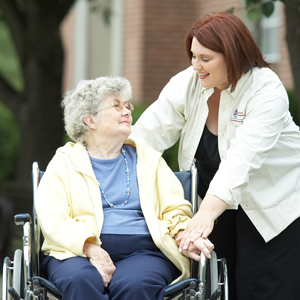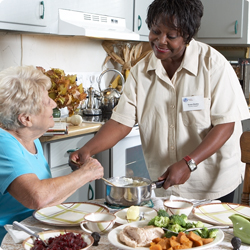How to Start Thinking About Respite Care, Step by Step.
Blog | February 19, 2016
Caregiving is rewarding, but it is also hard work that doesn’t fit into a neatly packaged schedule. It can be physically and emotionally draining, especially over time.
Respite caregivers for seniors a step by step guide Respite care provides important relief for caregivers, which allows time to rest, recharge, and attend to other life responsibilities. Even when we understand the benefits of respite care, it can still be challenging to take the first steps toward seeking help. There are many options to choose from, and it can be hard to decide what is right in your situation.
In this report on respite care in Canada, the authors acknowledge that for respite care to be successful, caregivers need access to resources that make them feel “safe, confident and comfortable” leaving their loved one for any period of time.
If you’re struggling with how to begin thinking about respite care, follow these three steps to get started.
Evaluate Your Needs
Respite care services vary in scope, and can include day programs, in-home care, or short-term stays in a long-term care residence. As a caregiver, think about what kind of support you need so that you can be your best in your caregiving role. Do you need small blocks of time during the day to run errands? Do you need a few extra hours each week to rest and relax, or attend appointments or classes? Or, do you need an extended time away to recharge your batteries? Spend some time to think about the pressure points in your life, and identify the things that would make a real difference for you.
Remember that it’s not selfish to think about your own needs — both you and the person you care for are better off when you stay healthy and balanced.
Assess Your Loved One’s Needs
Make a list of what care will be needed in your absence. This can include writing down all the things you regularly do as part of your care routine: spending social time together, attending medical appointments, preparing meals and/or feeding, administering medication, or assisting with personal care needs. You should also make note of any special skills or training that a respite care provider might need, depending on your loved one’s needs.
Making a list is a good way to help you remember everything when you start discussing options with others, and it’s also a good exercise to remind yourself that you still have your loved one’s care at the top of your priority list.
Involve Your Loved One
Involve your loved one in your deliberations. For example, ask for their input on important decisions like how much time you need away, or who will fill your role while you’re gone. This can take the pressure off both of you by putting the issue out in the open, and might generate ideas that you haven’t thought of. When you discuss respite care, you can remind your loved one that this can be a good change of pace for them too, because they’ll have a chance to interact with different people.
Don’t forget to reach out to others for ideas. Your own network might have suggestions too, and they will be as eager as you are to help you be your best.
These steps will equip you with the essential information you need to start exploring specific options that are available in your community
Individualized Home Care Options
Long-Term Home Care, 24 Hour Home Care & Short Term Care Options Customized for You







